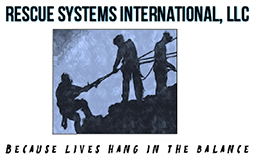
FEMA 80 HR STRUCTURAL COLLAPSE TECHNICIAN COURSE
Prerequisites
Spec Rescue International courses are taught in a manner to be compliant with the body of information as outlined in NFPA 1670 and 1006 Guidelines. It is the responsibility of the Authority Having Jurisdiction ( AHJ ) of any organization or its members that attend courses to follow the FULL recommendations as outlined in these standards where pre-requisites are required prior to attending any course. It is also the responsibility of the AHJ to assure full compliance with these standards in regard to placing any of its members in the line of service in any technical rescue disciplines. The AHJ or any of its student members acknowledge that certain technical rescue standards encompass requirements beyond the scope of the course component and fully acknowledge that, while Spec Rescue International offers the course component, full standard compliance rests with the AHJ.
Administrative/Classroom Objectives
- The student will receive briefing on administrative logistics and course operations
- Understand the importance of safe and sound practices in all phases of planning and rescue operations.
- Understand essential building components
- Understand building characteristics
- Understand how buildings are classified by engineers
- Understand types of force
- Understand material properties
- Understand loads
- Understand redundancy
- Understand environmental and man made forces
- Discuss various real event structural failures
Enabling Objectives
- The Student shall understand the function and capacity of the various types of shoring used in US&R to support damaged and collapsed structures
- The Student should also understand why these Shores are constructed in their specific configurations
- Understand the Types and amount of Load that needs to be supported by Emergency Shoring
- Understand what needs to be considered when selecting Shoring to support Damaged Structures
- Understand how Wood Shoring should be configured so as to respond with a Predictable and Slow Failure Mode
- Discuss the strength and load path for the various types of Vertical, Sloped and Lateral Shoring Systems
- Discuss what types of shoring systems are most commonly used to support Light Frame, Heavy Wall, Heavy Floor structures, and concrete structures
- The student shall properly breach, break, cut and burn to gain access through concrete, steel or other structural components during rescue operations in heavy floor, heavy wall, steel and concrete structures enabling
- Correctly identify types of concrete and their components
- Identify concrete components and their importance to systems design
- Understand their importance during collapse rescue operations
- Identify concrete construction types
- Understand the properties, strengths and weaknesses of concrete and its components
- Correctly select tools or tool packages for rescue operations
- Identify functional parts of an exothermic torch
- Identify functional parts of an oxy-acetylene or mapp gas torch
- Effectively troubleshoot each tool as needed
- Understand the basic physics as they relate to mass, gravity, and center of gravity.
- Understand moment of force considerations as the relate to the movement of stationary objects.
- Demonstrate efficiency of Rope Rescue Technician skills and theorem
- Explain the effective use of high pressure air bags.
- Calculate the weights of common materials.
- Describe the proper use of swivel hoist, steel angle brackets, and concrete screws.
- Understand the proper use of wire rope, wire rope fittings, end terminations, and tighteners
- Explain the use of slings and sling arrangements.
- Describe the use of chains for rigging and lifting.
- Determine the effects of critical angles as the relate to lifting and moving objects.
- Identify and describe the advantages and disadvantages of the different types of cranes. Explain considerations for all crane use.
- Understand the Tension, Compression, Bending, and Shear Forces that are exerted on building materials, and how they behave.
- Understand the concepts of Ductile and Brittle behavior.
- Introduce the concept of Vertical Load Path and Vertical Load Resisting Systems
- Discuss Lateral Load Resisting Systems, including Box, Moment Frame, and Diagonally Braced Frame Systems
- Define and discuss Structural Redundancy
- Understand how Wood Shoring should be configured so as to respond with a Predictable and Slow Failure Mode
- Discuss the Strength and Load Path for the various types of Vertical, Sloped and Lateral Shoring Systems
- Discuss what types of Shoring Systems are most commonly used to support Light Frame, Heavy Wall/ Floor and Precast buildings
- The Student shall understand the function and capacity of the various types of Shoring used in US&R to support damaged and collapsed structures
- The Student should understand why Shores are constructed in their specific configurations
- Understand the Types and amount of Load that needs to be supported by Emergency Shoring
- Understand what needs to be considered when selecting shoring to support damaged structures.
- Understand various tools and the operators influence on their operation.
- Understand types of buildings and how stress and forces apply to their failure and collapse footprint.
- Understand the interaction of building types, failures with survivability and search operations.
- Classify buildings, collapse and appropriate types of building, search and victim markings.Understand WHY, HOW AND WHERE we breach, break, cut and burn components of buildings in search and rescue operations.
- Understand how the physics and forces associated with heavy buildings and objects effect decisions to move and the necessary resources to move them i.e. airbags, pry bars, cranes, heavy equipment.
- Demonstrate the knowledge, skills and abilities required by integrating all applications of the class into a rescue scenario.
- Demonstrate the knowledge, skills and abilities required by integrating all applications of the class into a rescue scenario.

